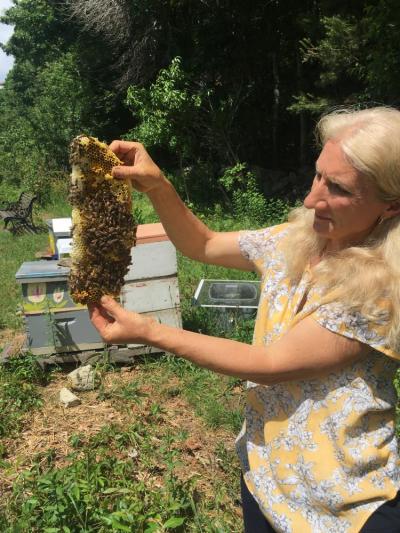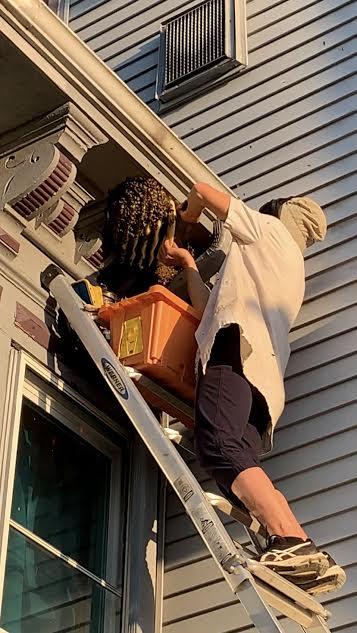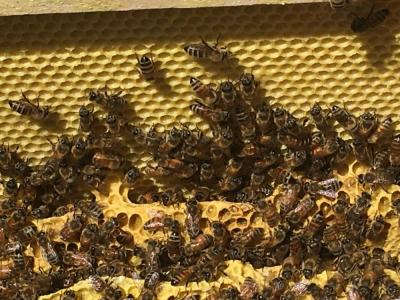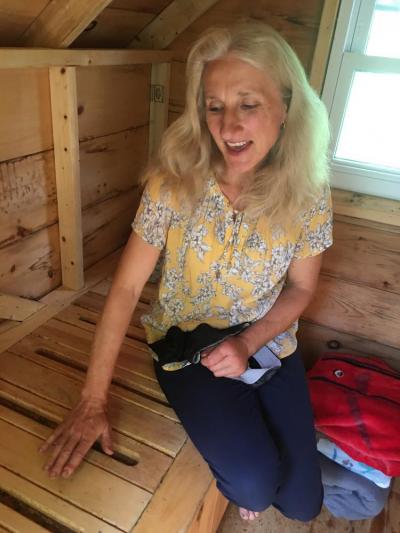Rochester beekeepers are creating a buzz
ROCHESTER — When a swarm of bees recently settled into the underhang of a Fall River house, Nettie Hopkins got a buzz from concerned residents.
They wanted their uninvited guests removed.
So Hopkins, who owns Nettie’s Bees in Rochester with her husband Tom Hopkins, stepped in.
Or up, on a ladder, to be more precise.
She used a “smoker’’ to calm the bees as she swept them into a box, guiding them with an actual goose feather to ensure they were not harmed.
She then transported the bees to a hive in her yard, where they will be in good company.
On her sprawling, flower-strewn property tucked away in Rochester, she cares for as many as 250,000 to 300,000 bees. One hive can house 50,000 bees.
One of the tasks of a beekeeper is to check for the queen, the focal point of each hive that lays eggs and controls the hive’s population, and to ensure she is the sole queen in the hive.
In the Fall River case, as in most situations when bees swarm, a second queen had been unwittingly born and was jockeying for space in the hive. The second queen took half the hive with her to find a new home.
And sometimes, they find the most unlikely places to settle. In addition to the Fall River underhang, she removed a bee swarm from a car in New Bedford not long ago, she said.
Her bees provide a valuable service: They pollinate local bogs. This is crucial to the success of cranberries.
Bees are used to move pollen from one cranberry flower to another to ensure the bog produces a healthy population of cranberries.
They also make honey, which she sells along with other products such as creams, tea and beeswax.
Visitors to her property can also receive “bee therapy’’ through close encounters with the bees. A small shed-like building on her property allows people to sit on a bench, with bees working in an enclosed space below.
The sounds and smells can be soothing, she said. People will use the room for 15 minutes to an hour, listening to the bees, which “talk to each other by vibrations,’’ which can be relaxing, she said.
Working on the bees also relaxes her, she said. But it’s not a hobby that can be undertaken lightly.
“You can’t just have a hive in your yard and say, We’re going to have honey. You need to take care of them,’’ Tom Hopkins said.
That includes keeping hives clean, using natural approaches to keep out ticks and mites that can harm the bees and ensuring they are fed over the winter, using a 1 to 1 mixture of sugar and water.
“It’s time-consuming,’’ Nettie Hopkins said. “You’ve got to love what you do.’’
But for the Hopkins, as well as for relieved swarm neighbors and happy cranberry consumers, the results are buzzworthy.

















